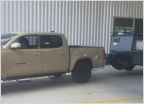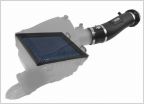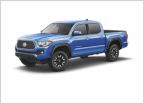-
Welcome to Tacoma World!
You are currently viewing as a guest! To get full-access, you need to register for a FREE account.
As a registered member, you’ll be able to:- Participate in all Tacoma discussion topics
- Communicate privately with other Tacoma owners from around the world
- Post your own photos in our Members Gallery
- Access all special features of the site
SDHQ Slider Measurement Needed
Discussion in '3rd Gen. Tacomas (2016-2023)' started by e6400ultra, May 29, 2018.
Page 4 of 4
Page 4 of 4


 Trailer security
Trailer security Afe super stock intake
Afe super stock intake Best remote start
Best remote start GoPro Tacoma 2017
GoPro Tacoma 2017 New Wheels & Tires On Stock 2020 TRD Sport
New Wheels & Tires On Stock 2020 TRD Sport Autozone battery testing
Autozone battery testing









































































